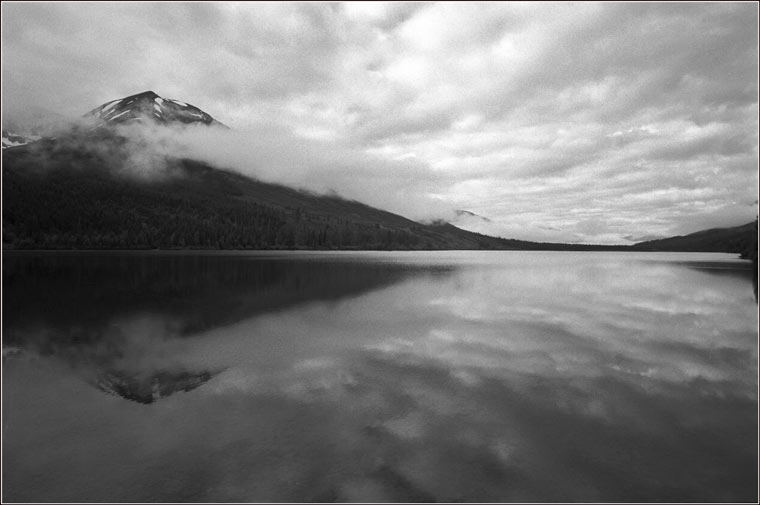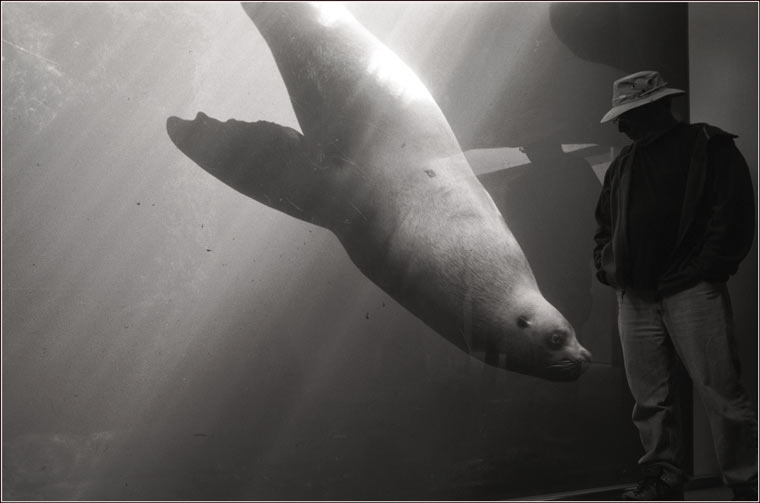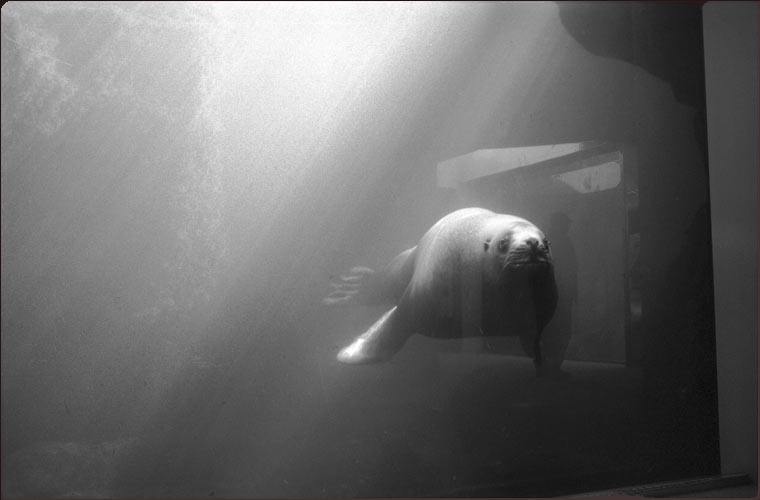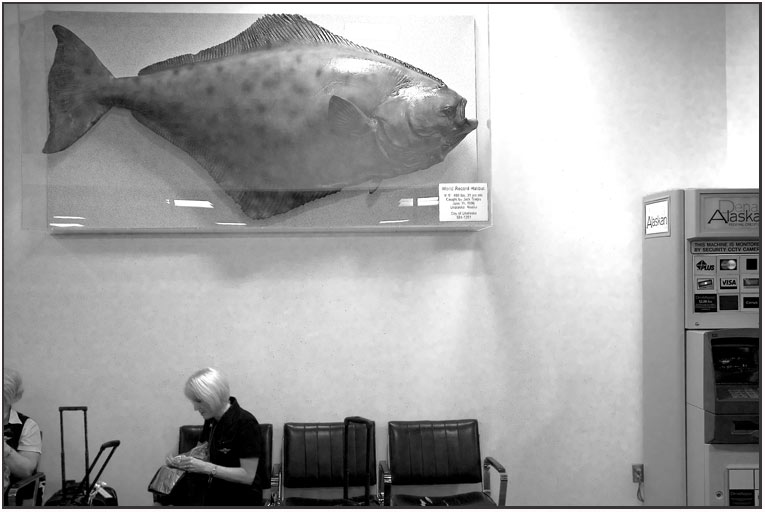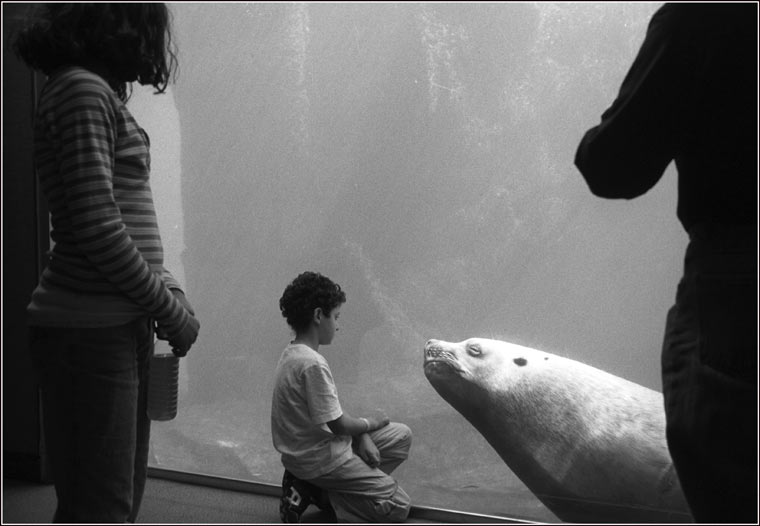
Thanks for contacting us about Woody, the
Alaska SeaLife Center's male Steller sea lion. Woody is one of three resident Stellers here at the Center, Sugar and Kiska are our female Steller sea lions. All three came to us from the Vancouver Zoo shortly after the building opened in 1998. They were all born in May 1993 and collected from an island in British Columbia at the same time. Woody, Sugar and Kiska have spent all their lives in captivity and are extremely popular among visitors.
Steller sea lions have three classified populations; the Eastern stock, the Western stock, and the Russian stock. They can be found as far south as northern California, all up and down the northern Aleutian chain, and as far south as the Sea of Japan. The Russian stock is currently under watchful eye, but seems stable. The Eastern population, east of longitude 144 which passes near Cordova, is considered threatened. The Western population was classified as a federally recognized endangered species in 1997.
The Western population declined rapidly between the early 1970s and 2000, dropping nearly 80%. No one knows exactly what has caused the population decline; however, it is one of the main issues driving research at the Alaska SeaLife Center. Availability of prey, feeding habits and diet, predation, disease, and pollutants are all possible causes that we are studying.
Labels: fauna
